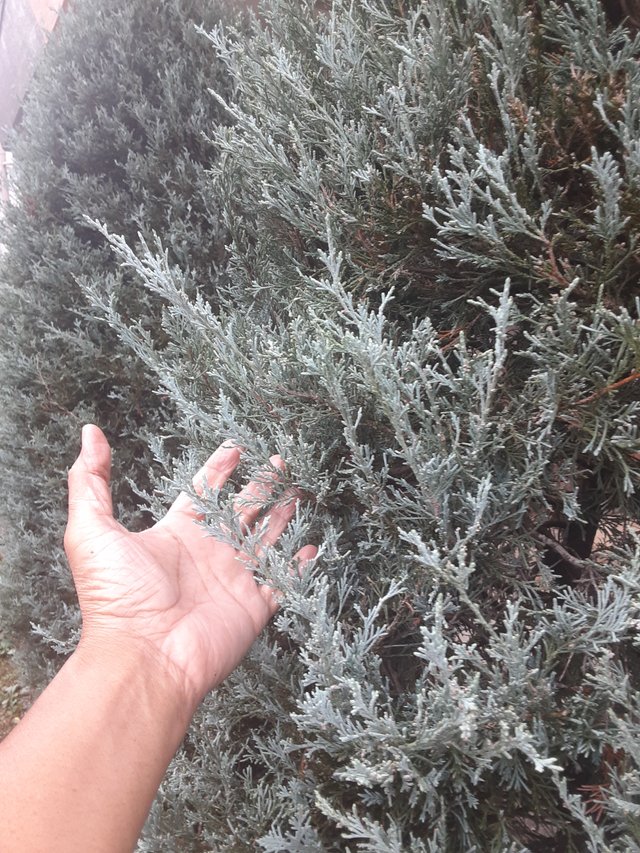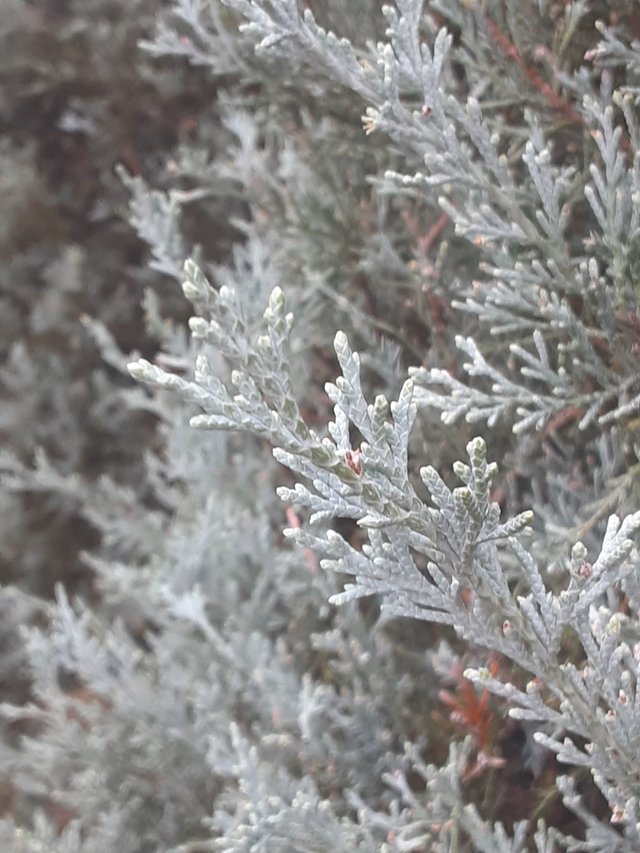
Juniperus scopulorum, commonly known as the Rocky Mountain Juniper, is a resilient and visually appealing conifer native to the western United States and Canada. It is a versatile tree that can be found in various landscapes, from arid mountainsides to formal gardens.
One of the most distinctive features of the Rocky Mountain Juniper is its foliage. As a juvenile, the tree displays needle-like leaves that are sharp and pointed. However, as it matures, these needle-like leaves gradually transform into scale-like leaves that are tightly pressed against the branches. This transition in leaf morphology is a common characteristic of many juniper species.
The color of the scale-like leaves can vary depending on the cultivar and environmental conditions. It typically ranges from a dark green to a bluish-green hue. Some cultivars, such as 'Wichita Blue,' exhibit a striking silvery-blue foliage that adds a touch of elegance to any landscape.

The leaves of the Rocky Mountain Juniper play a crucial role in its survival. They are adapted to withstand harsh conditions, such as drought and cold temperatures. The waxy coating on the leaves helps to reduce water loss, while the compact arrangement of the scales provides insulation against freezing temperatures. Additionally, the aromatic oils produced by the leaves deter herbivores and protect the tree from fungal infections.
The Rocky Mountain Juniper is a popular choice for landscaping due to its attractive foliage, drought tolerance, and low maintenance requirements. It can be used as a specimen tree, a hedge, or a windbreak. Its adaptability to various soil types and its ability to thrive in both full sun and partial shade make it a versatile plant for many different garden settings.
Ref.:
 |  |
Upvoted! Thank you for supporting witness @jswit.
Downvoting a post can decrease pending rewards and make it less visible. Common reasons:
Submit